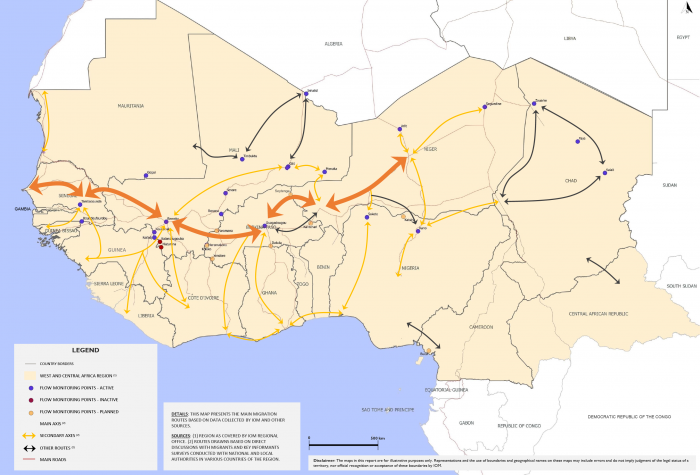Migration movements in the region are a long-standing phenomenon and integral part of West African societies. Many countries of the region host substantial migrant populations. Migration movements are first and foremost intraregional with almost 90-95% of all migrants moving in between countries of the region. Regional integration efforts led by the Economic Community of West African States (ECOWAS) ease these regional migration movements. All member states grant ECOWAS citizens the right to enter, reside as well as the establishment of economic activities in the territory of other member states. Intraregional migration is largely driven by economic migration movements towards labour intensive areas of the region. It constitutes itself around an internal mobility axis that runs east- and westwards through the Sahel region and is then further distributed north and south by secondary migration routes.

Apart from intraregional movements, statistics show that the number of migrants from West Africa in migration flows to the EU continue to be high despite the difficult conditions of making the journey. In 2017, six countries in the region were among the seven main countries of origin of migrants arriving on Italian shores. Irregular migration along the Central Mediterranean routes is increasingly dangerous for migrants. The desert crossings through Mali, Niger, Algeria and Libya pose a substantial threat to the well-being of individual migrants. They risk falling victim to banditry groups operating in the area or face the harsh environmental conditions in the desert area. Only very limited search and rescue missions are active in this area. After the desert, crossing the Mediterranean to Italy is by far the deadliest route. In addition, over 70% of the migrants interviewed by IOM on their arrival in Italy report that they fell victims of trafficking or other exploitative practices during their migratory journey along the Central Mediterranean routes. In 2018, the number of arriving migrants in Europe has significantly dropped while at the same time the numbers of casualties along the migration routes remain to be high.